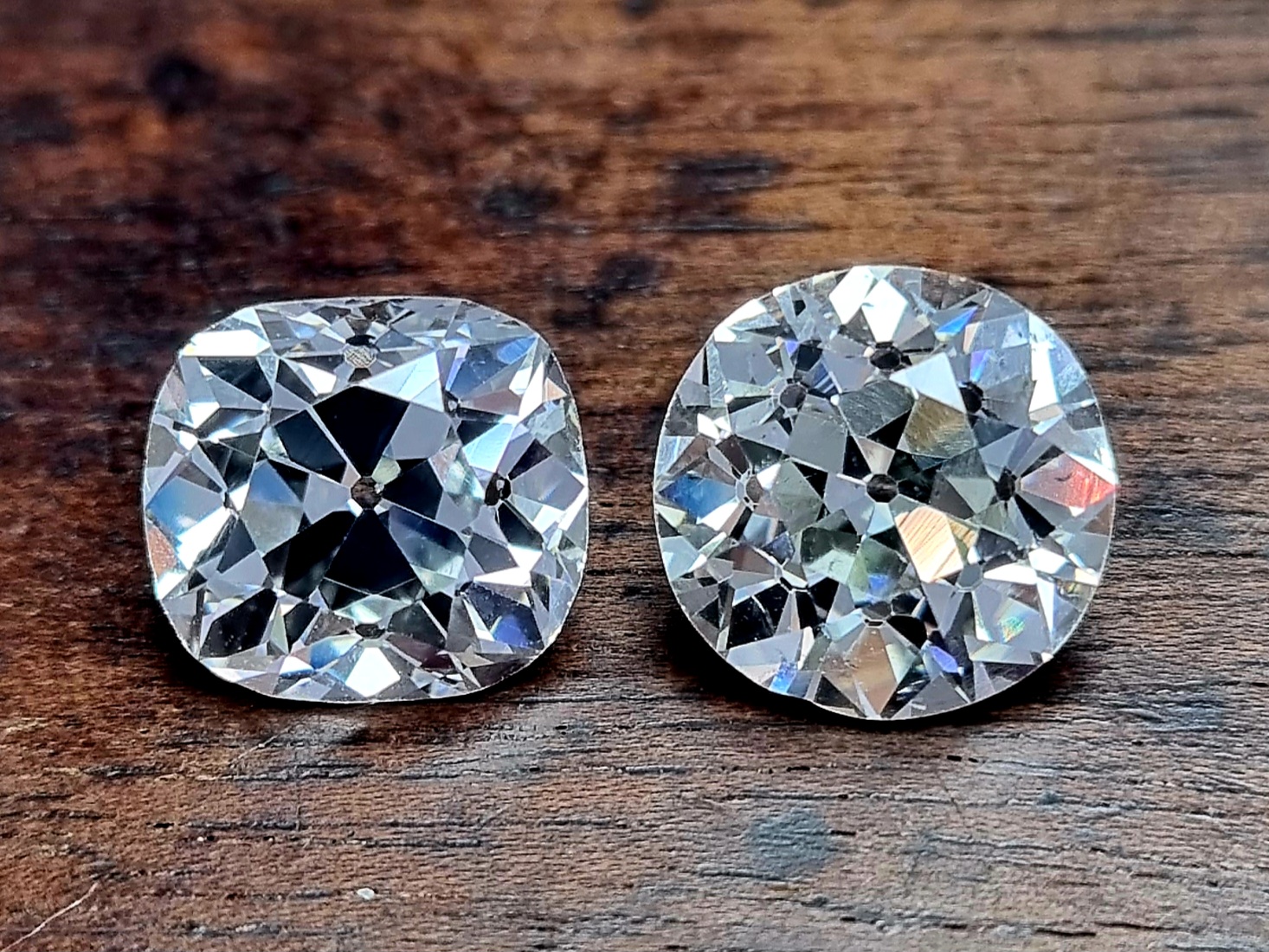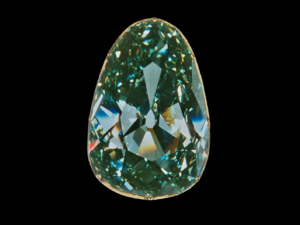Explore the rich history of diamond with this in-depth guide If you’re interested in diamonds, especially antique cuts like the “Old Mine Cut” and the “Old European Cut,” you’re in the right place. This article will take you on a journey through the evolution of diamond cutting, starting from the early days when diamonds were simply rough stones, to the modern round cuts we see today.
We’ll pay special attention to antique diamonds, which possess a unique charm distinct from modern cuts. These older styles have their roots in a time when each diamond was hand-cut, making each one a unique piece of history. Understanding these antique cuts not only deepens your appreciation of diamonds but also offers insights into the craftsmanship of the past.
So, if you’re keen to learn more about the history of diamond cutting and especially about antique styles, stick around. This guide is designed to be informative, easy to understand, and focused on what makes antique diamonds so special.
Table of Contents
The Genesis of Diamond Cutting: Ancient Times – Pre-14th Century
Origin in India
The journey of the history of diamond begins in India, the world’s first source of diamonds. Specifically, these precious stones were primarily found in the Golconda region, an area rich in alluvial deposits. For centuries, India was the go-to place for these gems, long before other diamond sources were discovered worldwide. Interestingly, the exact location of the Golconda mines remain uncertain today, although we have a general idea.
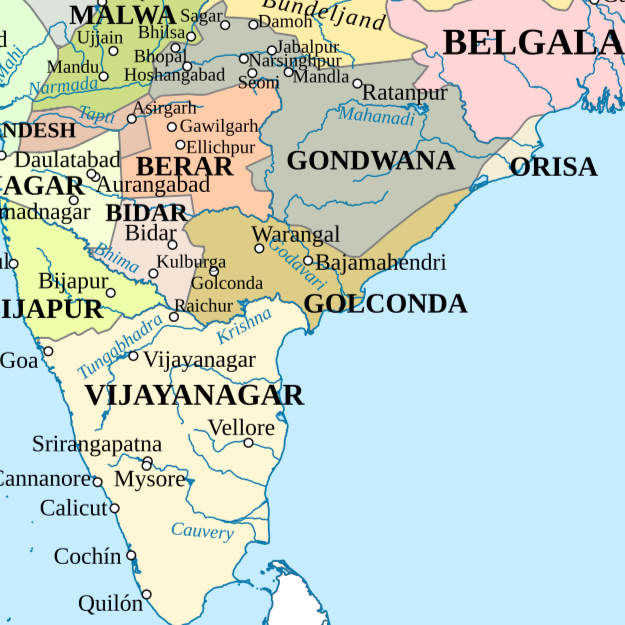
Diamonds in Ancient Culture
In ancient times, diamonds were not the sparkling gems we know today. The technology to cut and polish them simply didn’t exist. These diamonds were used in their natural, rough form and were valued for their hardness and rarity rather than their sparkle. They were often set in jewelry and used as talismans, believed to bring good luck and protection. The term “diamond” itself comes from the ancient Greek word “Adamas,” which means unbreakable or unalterable, highlighting the stone’s exceptional hardness and durability.
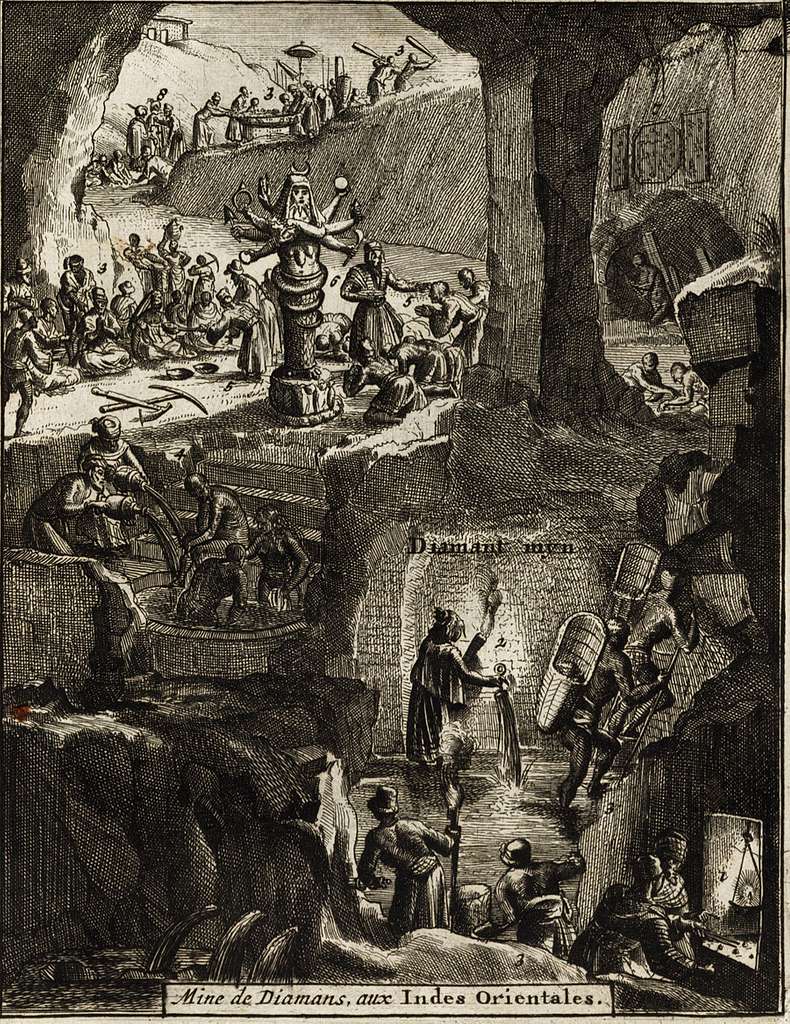
Practical Uses
The hardness of diamonds made them extremely useful for a variety of practical applications. They were used to engrave other softer gemstones like emeralds and sapphires. Diamonds were also used in cutting and drilling tools. Their hardness made them the perfect material for tasks that required a durable, long-lasting edge. This was a time when the utility of the diamond was just as important, if not more so, than its aesthetic appeal. During the whole history of diamond, one must not forget that diamonds were mostly used for practical and technical purposes.
Natural Shapes
In this era of the history of diamond, diamonds were typically used in their natural octahedral shape, resembling two pyramids joined at the base. The absence of cutting techniques meant that diamonds were used in their natural form, which limited their visual appeal but emphasized their geometric uniqueness. The most valuable stones were those with a perfect octahedral shape.
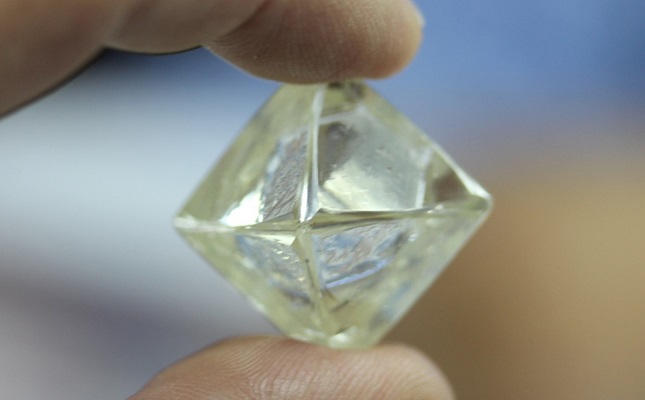
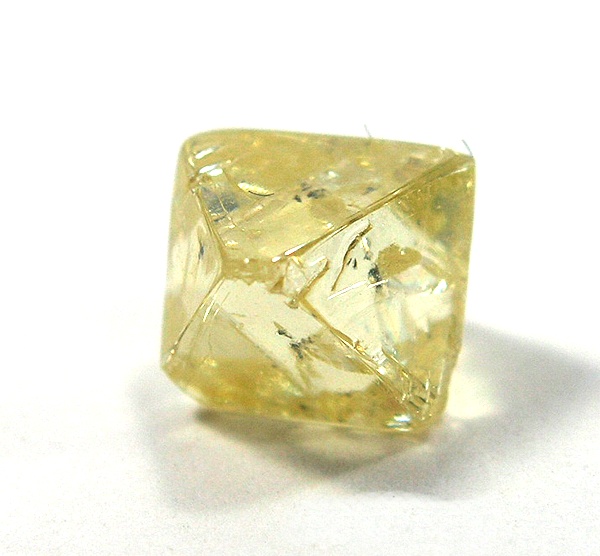
Antique Diamonds: A Timeless Beauty – 14th to 17th Century
The Point Cut
The 14th century marked a significant shift in diamond usage. For the first time in the history of diamond, diamonds were polished to enhance their appearance, leading to the development of the “Point Cut.” This rudimentary cut slightly polished the diamond’s natural, usually octahedral, shape to improve its aesthetics. Though basic, it signaled the dawn of diamond polishing.
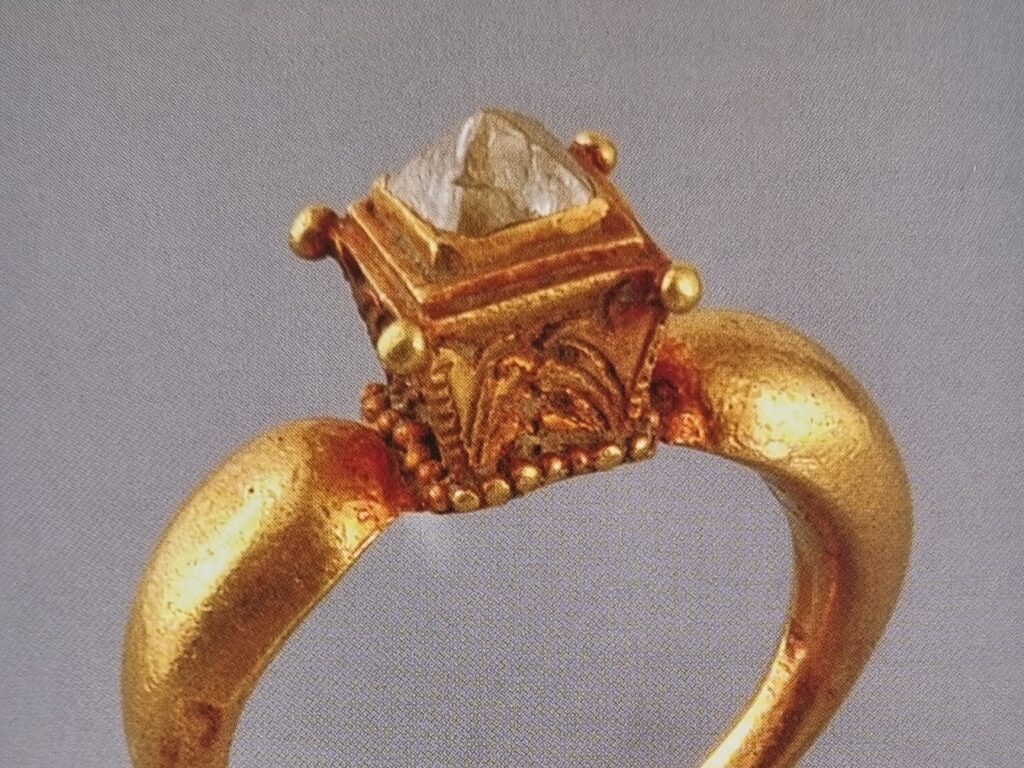
The Table Cut
As techniques advanced, the desire to further enhance diamonds led to the introduction of the “Table Cut” in the late 1400s. This cut flattened the top of the diamond, creating a table-like surface. This was groundbreaking as it was the first time the natural shape of a diamond was significantly altered to enhance its appearance.
The Renaissance and Rose Cut
The Renaissance era, a period of great intellectual and artistic awakening in the 16th century, saw the development of the “Rose Cut.” This was a milestone in the history of diamond as it was the first “complex” diamond cut. This cut featured a flat bottom and a domed top with multiple facets, resembling a rose’s petals. The Rose Cut significantly enhanced the diamond’s brilliance and quickly gained popularity. The flickering candlelight of the time made these diamonds appear even more captivating, solidifying their status as symbols of wealth and prestige.
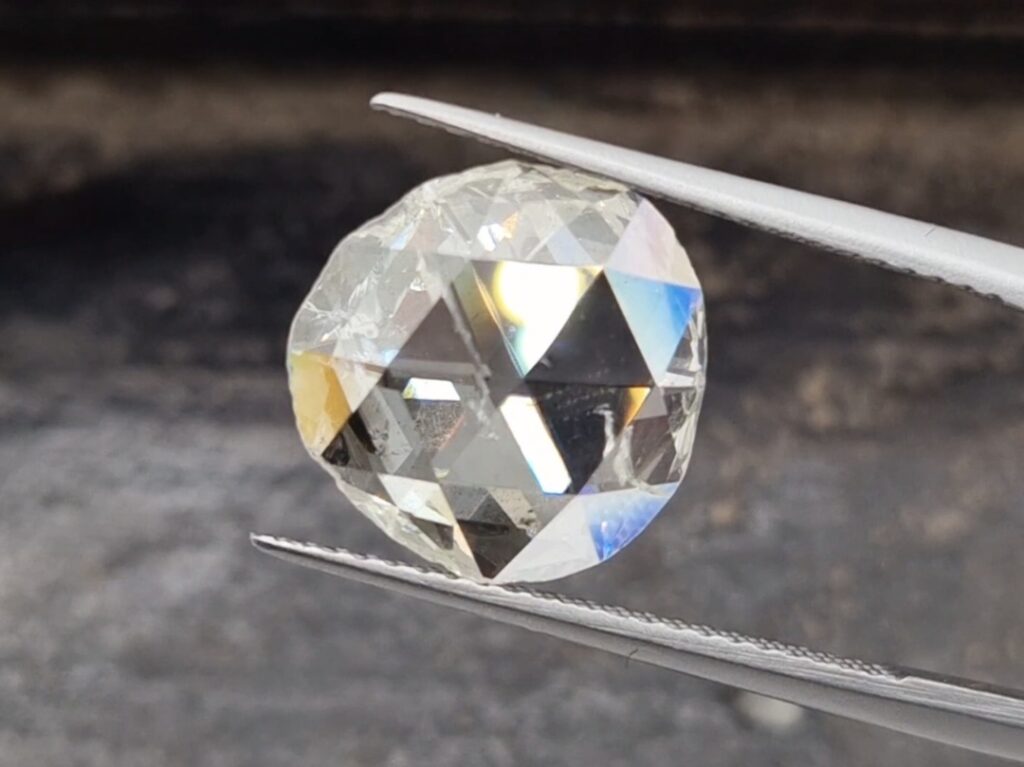
The Mazarin Cut
The 17th century introduced another pivotal cut, known as the “Mazarin Cut,” named after Cardinal Mazarin, a prominent art collector and politician of that era. This cut featured 17 facets on the diamond’s crown, increasing its brilliance. The Mazarin Cut was a precursor to the brilliant cuts we see today and showcased the advancements in diamond cutting techniques.

The Old Mine Cut: A Glimpse into the Past – 18th Century
Introduction to Brilliant Cuts
The 18th century heralded a significant milestone in the history of diamond with the introduction of “brilliant cuts,” designed to maximize a diamond’s sparkle and brilliance. Among these early brilliant cuts, the Old Mine Cut holds a special place.
A “brilliant cut” consists of an upper section (the crown) and a lower section (the pavilion), a structure still prevalent in today’s modern cuts. For more information about brilliant cuts, you can refer to my Diamond Basics article.
The Birth of the Old Mine Cut
The Old Mine Cut originated at a time when diamond mines were relatively scarce, primarily located in India and Brazil. The term “Old Mine” refers to these early sources. This cut was the first to adopt the modern brilliant cut structure.
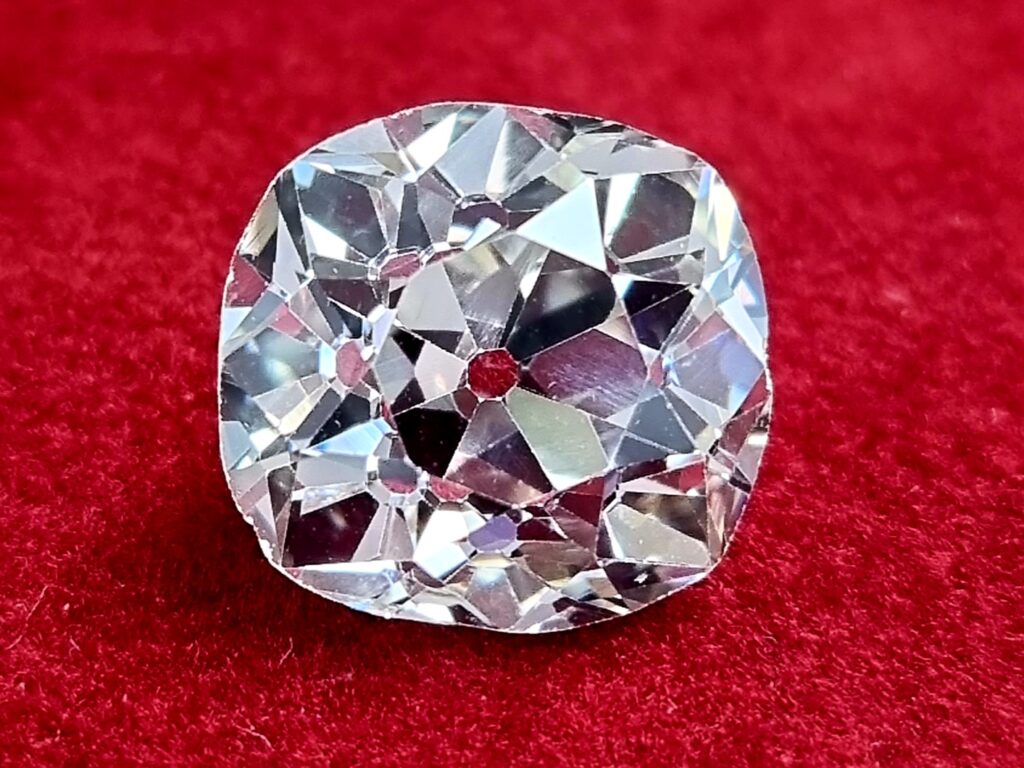
Variations: Peruzzi Cut
As diamond cutting techniques evolved, variations of the Old Mine Cut emerged. One notable variation was the Peruzzi Cut, named after its creator, Vincenzo Peruzzi. Some argue that Peruzzi was the original inventor of the Old Mine Cut, but it’s more likely that the cut was developed by various diamond cutters in cities like Antwerp, Amsterdam, London, Paris, and Venice. Today, Peruzzi Cuts are distinguished by their pointy corners, unlike the classic Old Mine Cut’s rounded edges. Sometimes, Peruzzi’s feature different facet arrangements or additional facets.
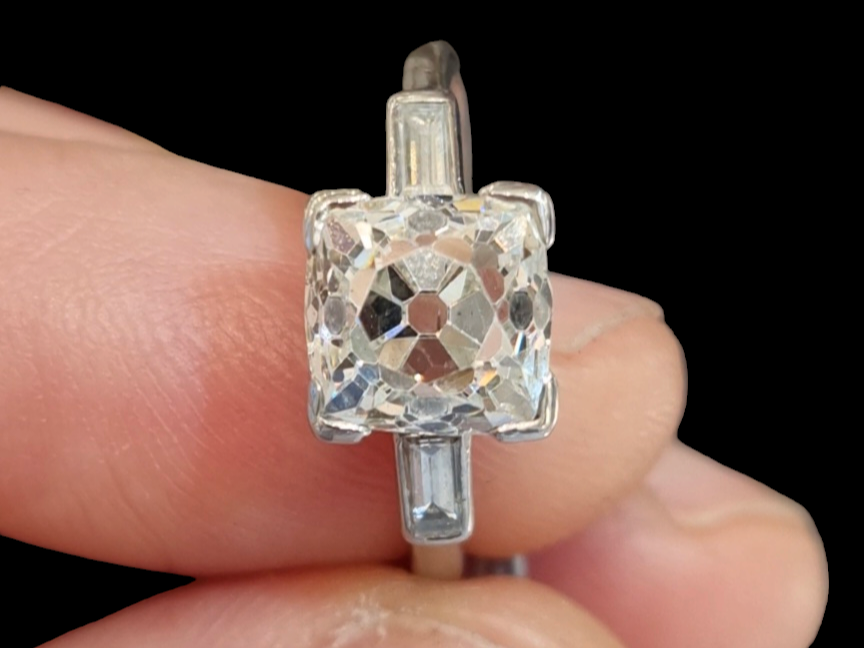
Characteristics of the Old Mine Cut
The Old Mine Cut had several defining features. It consisted of 58 facets arranged to maximize the use of the rough diamond. The cut was square or slightly rectangular with rounded corners, a significant departure from the more symmetrical and simpler shapes of earlier cuts. The Old Mine Cut was designed for maximum sparkle and also ensuring minimal waste of the precious rough diamond.
Appeal and Value
Today, the Old Mine Cut is highly valued for its unique, hand-crafted nature and historical significance. Each Old Mine Cut diamond was painstakingly hand-cut, making each one a unique piece of art. These diamonds are often found in heirloom jewelry and are sometimes highly prized at auctions. Their value lies not just in their inherent beauty but also in the stories they tell and the history they represent.
The Old Mine Cut in Modern Times
During much of the 20th century, Old Mine Cuts were not highly regarded by modern designers. Only a few, like JAR, extensively incorporated them into their jewelry creations. However, the 1990s saw a resurgence in their popularity among collectors and those who appreciate vintage and antique jewelry. Their unique characteristics and interaction with light have made the Old Mine Cut increasingly popular among both the public and jewelers. Because many were recut into modern shapes, their rarity and consequently their value have increased.
The Old European Cut: The Bridge to Modern Brilliance – 19th Century
Technological Advancements
The 19th century was a period of significant technological progress, and this had a big impact on diamond cutting. One of the most important inventions was the bruting machine, which allowed for more precise shaping of diamonds. This machine played a key role in the development of the Old European Cut.
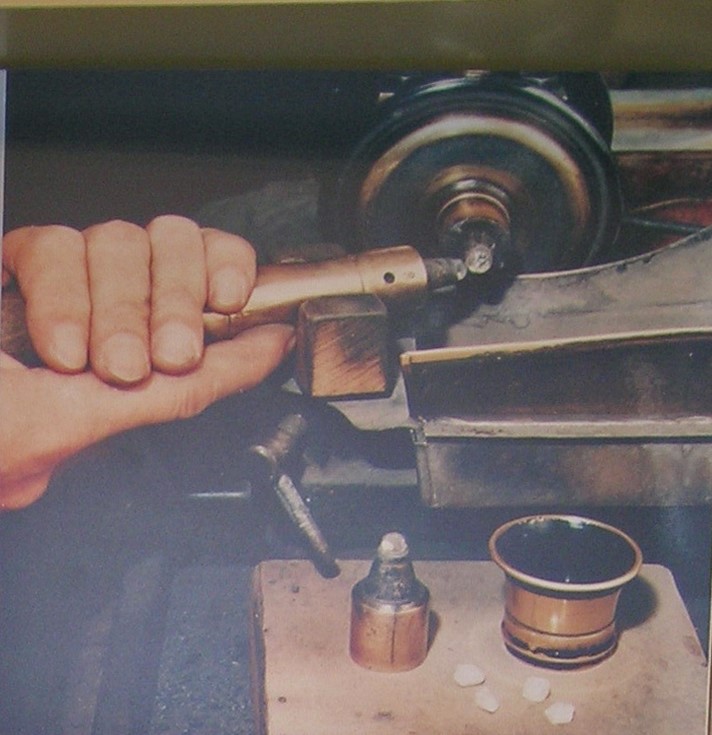
The Birth of the Old European Cut
The Old European Cut was essentially an evolution of the Old Mine Cut. The main difference was in the shape; while the Old Mine Cut was more square, the Old European Cut was round. This rounded shape was made possible by the bruting machine, which could shape diamonds more accurately than ever before. There are other differences between them as the angles of the facets or the size of the culet but it is the shape that is by far the main difference.

Handcrafted Beauty
Even with the advent of machines, the Old European Cut diamonds were primarily cut by hand. This hand-crafted approach gave each diamond its own unique characteristics. No two Old European Cut diamonds are exactly alike, which adds to their charm and value.
Maximizing Brilliance
The Old European Cut was designed to make diamonds as brilliant as possible. It featured a high crown, small table, and an open culet, which were all aimed at maximizing how the diamond interacted with light. This was a big step forward in the quest to make diamonds as shiny and brilliant as possible.
Shape and Comparison
The Old European Cut and the Old Mine Cut may seem similar, but they have key differences. The Old European Cut is round, while the Old Mine Cut is more square or rectangular. This difference in shape also affects how the diamond reflects light, making each cut special in its own way.

The Old European Cut Today
Like the Old Mine Cut, the Old European Cut was also extensively recut over time. But today, the Old European Cut is highly valued by collectors and those who appreciate antique and vintage jewelry. Its unique features and historical significance make it a popular choice for those looking for something different from modern cuts. The Old European Cut serves as a bridge between the old world craftsmanship and the modern focus on brilliance and fire.
Modern Diamond Cutting Techniques – 20th Century Onwards
Standardization: The Age of Precision
The 20th century ushered in a significant shift toward standardization in diamond cutting. Thanks to advanced machinery and computer-aided design, diamonds can now be cut with unparalleled precision. This technological leap has led to the development of standardized cuts, ensuring consistent quality and brilliance. As a result, modern diamonds have transitioned from being unique works of craftsmanship to commodities with predictable characteristics.
The Round Brilliant Cut
One of the most groundbreaking developments in the history of diamond has been the Round Brilliant Cut. Optimized for maximum sparkle, this cut has become the most popular choice for diamond enthusiasts. For many who are not well-versed in the world of diamonds, the Round Brilliant Cut is often the only cut they are familiar with. Building on the principles of earlier cuts like the Old European Cut, the Round Brilliant Cut aims to achieve unparalleled levels of brilliance and fire. This is accomplished by faceting the stones with smaller, perfectly symmetrical facets—something that would have been impossible for artisans in earlier centuries.
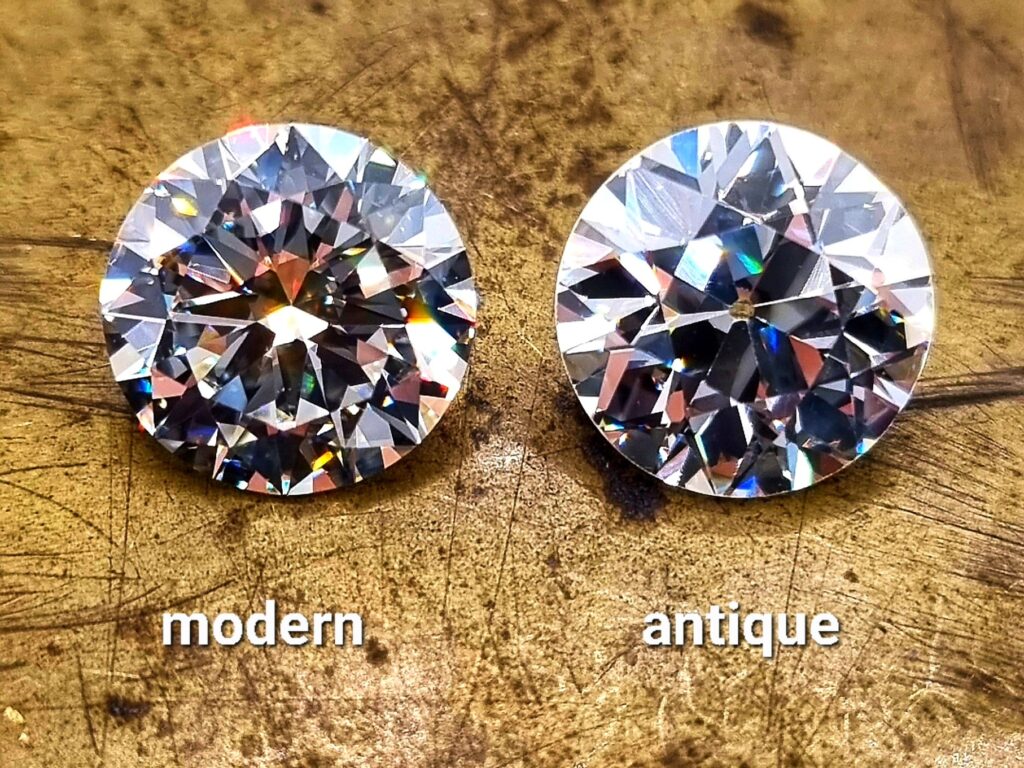
Technological Innovations
Advancements in technology have completely reshaped the history of diamond. They have opened the door for intricate and unique cuts that were previously unimaginable. Computer-aided design and laser cutting techniques have revolutionized the diamond industry, offering an unprecedented level of detail and precision. Lasers, in particular, have empowered diamond manufacturers to shape rough stones with ease and accuracy.
The Uniqueness of Antique Cuts: Irreplaceable Artistry
Despite these technological strides, it’s crucial to recognize that antique cuts like the Old European Cut and the Old Mine Cut possess a unique allure that modern technology can’t replicate. The tools and artisanal skills of yesteryears are lost to history, rendering each antique-cut diamond a one-of-a-kind work of art.
While modern replicas of antique cuts can be created, they are easily distinguishable by experts. The slow-moving polishing wheels and the manual skills of artisans from the past are irreplaceable. This handcrafted nature imbues antique cuts with a level of uniqueness that even today’s advanced technology can’t duplicate.
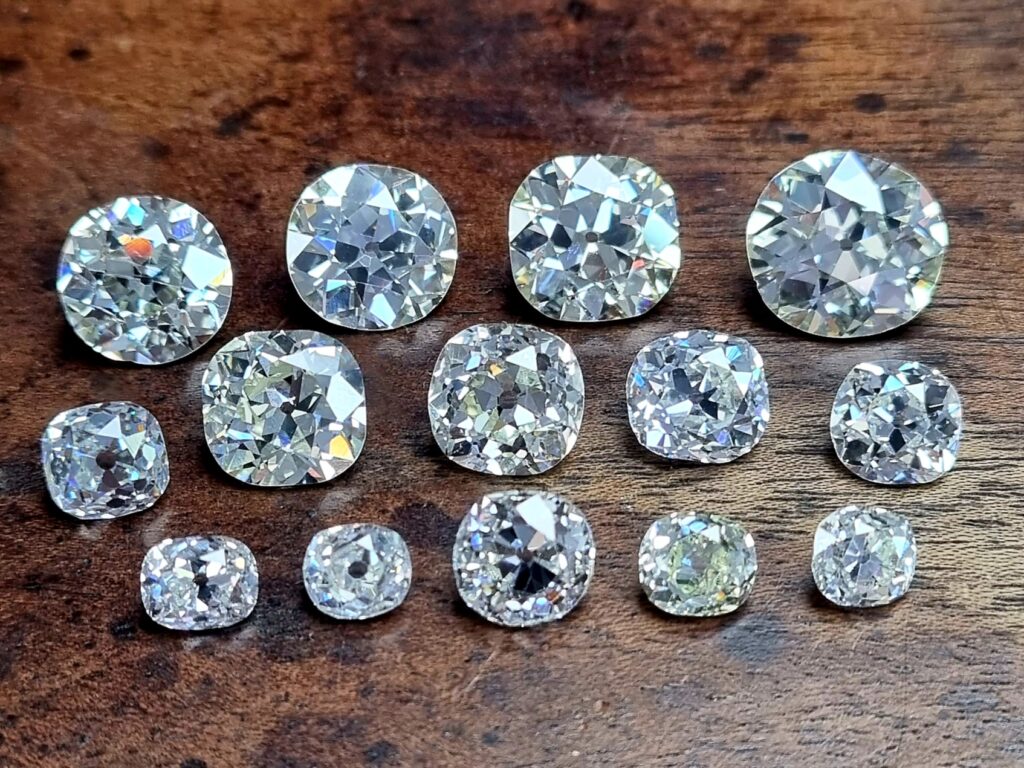
The Future of Diamond Cutting: A Glimpse into Tomorrow
As technology continues to evolve, the future of diamond cutting appears boundless. It’s not far-fetched to envision a world where the majority of diamonds are cut primarily by machines within the next decade. This would be a natural evolution in the history of diamond cutting.
Why Understanding the History of Diamond Matters
A Deeper Appreciation
Understanding the history of diamond allows for a deeper appreciation of each stone, especially antique cuts. Knowing how diamond cutting techniques have evolved over the years helps us value the craftsmanship and skill that went into creating these older styles. Each antique cut diamond is a piece of history, reflecting the technology and artistry of its time.
Rarity and Uniqueness
Antique cuts like the Old European Cut and the Old Mine Cut are increasingly rare, making them highly valuable. These cuts were crafted by hand, with tools that no longer exist, making them truly unique. Understanding their history adds another layer to their rarity and value.
Informed Choices
When you understand the history of diamond cutting, you’re better equipped to make informed choices, whether you’re buying, selling, or simply admiring diamonds. You’ll know what sets antique cuts apart from modern cuts, and why they might command a higher price or hold sentimental value.
Antique cuts serve as a tangible connection to the past. They offer a glimpse into the technological and artistic landscape of the time when they were cut. This historical perspective enriches our understanding and appreciation of these unique stones.
Investment Value
Antique cuts often appreciate in value precisely because they are products of historical craftsmanship that can’t be replicated today. With today’s love of vintage and their scarcity, it is likely that these Old Cut Diamonds will not only retain their value but probably will appreciate over time. They are hallmarks in the history of diamond.
Conclusion
The history of diamond is a fascinating journey that spans centuries, from the early days when diamonds were uncut rough stones to the highly precise and standardized cuts we see today. This evolution has given us a wide range of diamond cuts, each with its own unique characteristics and allure.
Understanding this history is crucial for several reasons. It allows us to deeply appreciate the craftsmanship that goes into each diamond, especially the antique cuts like the Old European Cut and the Old Mine Cut. These antique cuts are not just beautiful gems; they are unique pieces of history, crafted with techniques and tools that no longer exist. Their rarity and the skill required to create them add layers of value and significance.
Whether you’re a collector, an investor, or simply someone who appreciates the beauty of diamonds, understanding the history of diamond enriches your experience and informs your choices. It offers a lens through which to view these precious stones, not just as objects of beauty, but as symbols of technological advancement and artistic skill.
In a world where diamonds continue to captivate us with their brilliance, taking the time to understand their history adds depth to their sparkle. It reminds us that behind each gleaming facet is a story, a tradition, and a craft that has been honed over centuries.
Additional Resources
- “Diamonds: An Early History of the King of Gems” by Jack Ogden
- This book provides an in-depth look into the history of diamond, including antique cuts.
- HRD Antwerp
- A leading authority in diamond certification, HRD Antwerp offers valuable insights into the grading and evaluation of antique diamonds.
- “The Nature of Diamonds” by George E. Harlow
- This book covers the geological aspects of diamonds and offers a historical perspective.
- “Diamond Cuts in Historic Jewelry – 1381 to 1910” by Herbert Tillander
- This book focuses specifically on the history of diamond cuts, making it a valuable resource for those interested in antique diamonds.
- “Gemstones of the World” by Walter Schumann
- While not exclusively about diamonds, this book offers a comprehensive look at gemstones, including their history and characteristics.
- Online Courses on Gemology
- Websites like the Gemological Institute of America (GIA) offer courses that delve into the 4 C’s of diamonds and beyond.


